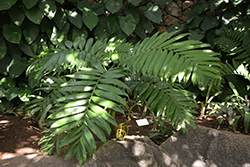Fri & Sat 8am - 8pm
Sun 8am - 7pm
Anytown, USA 12345
fax: 261.787.0463
e-mail: info@successgc.com


Plant Finder

Height: 10 feet
Spread: 5 feet
Sunlight:
![]()
Other Names: Tepejilote Palm, Palmito Dulce
Description:
A usually single trunked palm, but includes a rarer clustering variety; tall, thick. dark green stems rise up, with ringed leaf scars that produce a bamboo-like appearance; fast growing, with long, feathery, glossy green leaves; avoid any direct sun
Features & Attributes
Pacaya Palm's attractive large glossy narrow pinnately compound leaves remain dark green in color throughout the year on a plant with the bulk of the canopy held atop a towering trunk or stem. It is draped in stunning clusters of yellow flowers with orange overtones hanging below the branches from early to mid summer. The dark green stems are very effective and add to the plant's interest.
This is an open multi-stemmed evergreen houseplant with a towering form with a high canopy of foliage concentrated at the top of the plant. Its extremely fine and delicate texture is quite ornamental and should be used to full effect. This plant should not require much pruning, except when necessary to keep it looking its best.
Planting & Growing
When grown indoors, Pacaya Palm can be expected to grow to be about 10 feet tall at maturity, with a spread of 5 feet. It grows at a fast rate, and under ideal conditions can be expected to live for approximately 15 years. This houseplant should only be grown away from direct sunlight or in a room with strong artificial light. It does best in average to evenly moist soil, but will not tolerate standing water. The surface of the soil shouldn't be allowed to dry out completely, and so you should expect to water this plant once and possibly even twice each week. Be aware that your particular watering schedule may vary depending on its location in the room, the pot size, plant size and other conditions; if in doubt, ask one of our experts in the store for advice. It is not particular as to soil pH, but grows best in rich soil. Contact the store for specific recommendations on pre-mixed potting soil for this plant.
There are many factors that will affect the ultimate height, spread and overall performance of a plant when grown indoors; among them, the size of the pot it's growing in, the amount of light it receives, watering frequency, the pruning regimen and repotting schedule. Use the information described here as a guideline only; individual performance can and will vary. Please contact the store to speak with one of our experts if you are interested in further details concerning recommendations on pot size, watering, pruning, repotting, etc.
-- THIS IS A HOUSEPLANT AND IS NOT MEANT TO SURVIVE THE WINTER OUTDOORS IN OUR CLIMATE --
